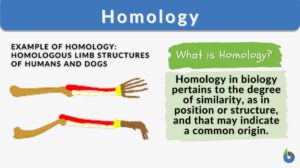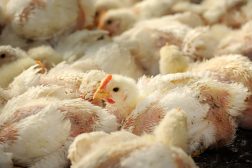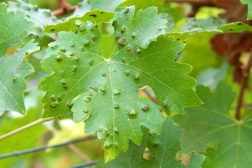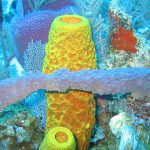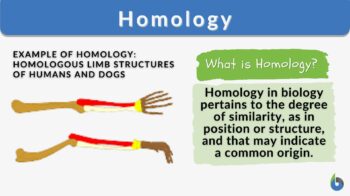
Homology
n., plural: homologies
[həʊˈmɒlədʒɪ]
Definition: The condition of being homologous, i.e., having structural similarity
Table of Contents
In biology, homology refers to similarities caused by shared ancestry between two structures or genes from distinct species. For instance, the forelimbs of vertebrates are a common example of homologous structures, with the wings of bats and birds, arms of primates, front flippers of whales, and forelegs of four-legged vertebrates like dogs and crocodiles all descended from the same original tetrapod structure.
History
In biology, homology refers to the similarity of the structure, physiology, or development of various species of other organisms as a result of their shared evolutionary parent. It plays a huge part in evolutionary biology. Homology is in contrast to analogy, which is a functional similarity of structure based only on the similarity of usage rather than shared evolutionary roots (common evolutionary ancestor).
Accordingly, the forelimbs of such radically different mammals as humans, bats, and deer are homologous; the way that they are built and how many bones they contain varies, but they all represent adaptive modifications of the forelimb structure or anatomy of their shared early mammalian ancestors.
Comparable structures, on the other hand, can be likened to the wings of birds and insects, which are used for flight in both types of species but did not share a common ancestor at the beginning of their evolutionary development. Sir Richard Owen, a British biologist from the 19th century, was the first to define homology and analogy in detail.
Homology was later described by Charles Darwin‘s theory of evolution in 1859, but it had been seen before this, beginning with Aristotle and ending with Pierre Belon in 1555.
Aristotle (about 350 BC) observed homology, which was clearly examined by Pierre Belon in his 1555 Book of Birds, in which he meticulously compared the skeletons of birds and humans. Through medieval and early modern times, the pattern of similarity was viewed as part of the unchanging vast chain complexes of being: it was not seen as signifying evolutionary change.
Homonymy was of particular significance in the German Naturphilosophie tradition as a means of demonstrating unity in nature. In his article “Metamorphosis of Plants” in 1790, Goethe outlined his foliar theory, demonstrating that flower parts are generated from leaves.
Late in the 18th century, the serial homology of limbs was described. In 1818, the French biologist Etienne Geoffroy Saint-Hilaire demonstrated that fish, reptiles, birds, and mammals had structural similarities in his theorie d’analogue (also known as the “theory of homologues”).
The Cuvier-Geoffroy controversy began in 1830 when Geoffroy went further and looked for similarities between Georges Cuvier’s embranchments, such as vertebrates and mollusks. Geoffroy stated the connection principle, according to which the links between various structures and their relative positions are what matter.
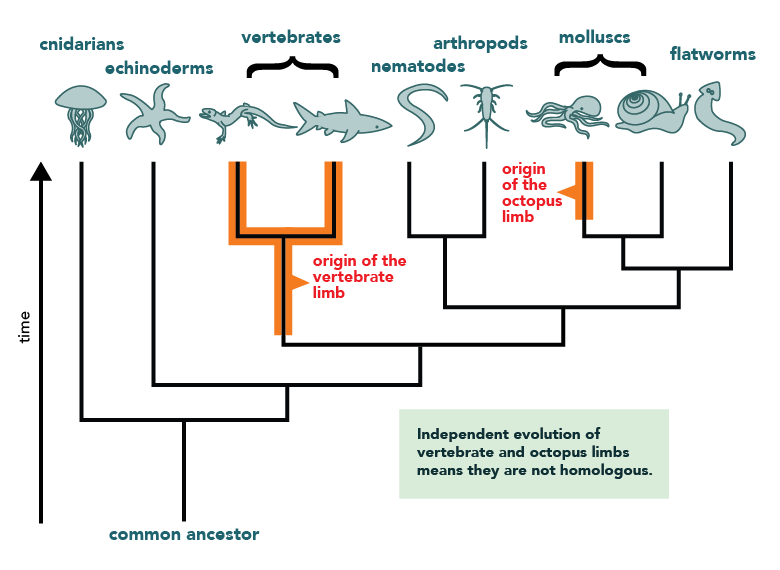
Animals in the same family are more closely related and diverge later than animals that are only in the same order and have fewer homologies, according to the Estonian embryologist Karl Ernst von Baer, who made the observations that are now known as von Baer’s laws in 1828.
In contrast to recapitulation theory, von Baer’s idea acknowledges that each taxon (such as a family) has identifiable common characteristics and that embryonic development follows the taxonomic hierarchy.
Richard Owen, an anatomist who studied the similarities between vertebrate fins and limbs, coined the term “homology” in biology in 1843. He defined it as the “same organ in different organisms under every variety of form and function“ in contrast to the term “analogy,” which he used to describe various structures that served the same function or purpose.
Position, development, and composition were the three basic factors Owen established for assessing if characteristics were homologous. Charles Darwin defined homologous structures in 1859 by stating that taxonomy was the branches of a single tree of life and that the organisms in question shared a body plan from a common ancestor.
Watch this vid about homology:
Biology definition:
Homology is a condition characterized by having a degree of similarity, as in position or structure, that may indicate a common origin. There is a correspondence of structure. The term is a common or fundamental concept in evolutionary biology and genetics.
- In evolutionary biology, homology refers to a state of similarity in structure and anatomical position but not necessarily in function between different organisms indicating a common ancestry or evolutionary origin. An example would be the forelimbs of humans and bats. These structures are described as homologous. These structures have dissimilar functions but have the same fundamental skeletal structure and developmental origin. Their similarity could indicate a likely evolution from a common ancestor.
- In genetics, homology refers to a condition denoting the pair of chromosomes having corresponding genes for a particular trait or characteristic. The pair of chromosomes having the same gene sequences, each derived from one parent, is referred to as homologous chromosomes.
Etymology: from Greek “homologia”, meaning “agreement”.
Related form: homologous.
Definition
The term homology, which originated around 1656, is taken from the Greek meaning that which is formed from homos (‘same’) and logos (‘relation’). There are many things that the word homology is used to define and describe including homological algebra, homology class, singular homology, homology class, persistent homology, homology groups, and homology theory.
In mathematics
In mathematics, the fundamental idea of algebraic topology is homology. It is a method for generally connecting a series of algebraic objects, like modules or abelian groups, with other mathematical objects, like topological features, or topological spaces.
It makes sense that two curves in a plane or other two-dimensional hole or surface are homologous if they together define an area’s inside and outside. These are often amorphous solids characterized as homology groups.
Homology was created as a tool to analyze and categorize manifolds based on their cycles, which are persistent loops and persistent diagrams that may be traced on a certain n-dimensional manifold but are not continuously deformed into one another.
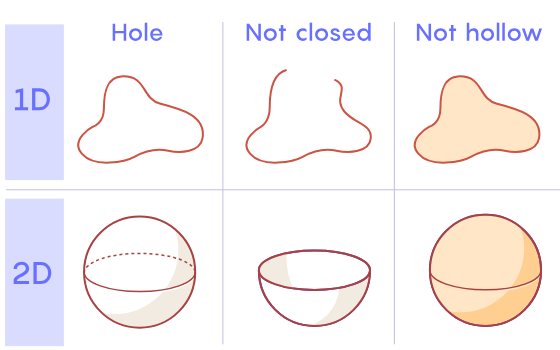
Construction of homology groups
A topological space, for example, serves as the starting point for the general construction, on which one first creates a chain complex C(X) storing information about X. A chain or simplicial complex is a collection of abelian groups or modules connected by boundary operators known as homomorphisms.
Simplicial homology
The motivating example comes from algebraic topology and is the simplicial homology of a simplicial complex X. The n-dimensional oriented simplexes of X serve as the generators of the chain group Cn, which is a free abelian group or module.
Singular homology
Singular homologies can be defined for any topological space X using the simplicial homology example as a paradigm. The definition of a chain complex for X starts with the assumption that Cn is the free abelian group (or free module) whose generators are all continuous maps from n-dimensional simplices into X. The simplices’ boundary maps are the source of the homomorphisms n.
In biology
If similar biological features or sequences in distinct species are derived from a common ancestor, they are homologous. Thus, homology indicates different evolution and these are called homology classes.
- Numerous insects have two pairs of wings that are used to fly, such as dragonflies. The first pair of wings in beetles has evolved into a pair of hard wing coverings whereas the second pair of wings in Dipteran flies has evolved into little halteres used for balance.
- The front flippers of whales, the wings of birds, the sprinting forelegs of dogs, deer, and horses, the small forelegs of frogs and lizards, and the grabbing hands of primates, including humans, have all developed from the forelimbs of primitive vertebrates. In the fossilized remains of lobe-finned fish like Eusthenopteron, the same group of three main forearm bones—the humerus, radius, and ulna—can be discovered.
- Organs that evolved in the embryo in the same way and from identical sources, such as from matched primordia in succeeding animal segments, are referred to be serially homologous in developmental biology. Examples are the centipedes’ legs, the insects’ maxillary and labial palps, and the spinous processes of the vertebrae of a spinal column. When the ovaries and testicles of mammals, including humans, emerge from the same embryonic tissue, the male and female reproductive organs are said to be homologous.
- Protein or DNA sequence homology is similarly described in terms of common ancestry. A speciation event (orthologs) or a duplication event (paralogs) might lead two DNA regions to share ancestry. From the similarity of their sequences, one can deduce homology between proteins or DNA.
The appearance of considerable similarity between the two sequences is strong evidence that they are related via divergent evolution established from a common ancestor. The homologous areas are found using alignments of various sequences.
Animal behavior homology is still debatable, however, there is some evidence that, for instance, primate dominance hierarchies are shared by all primates.
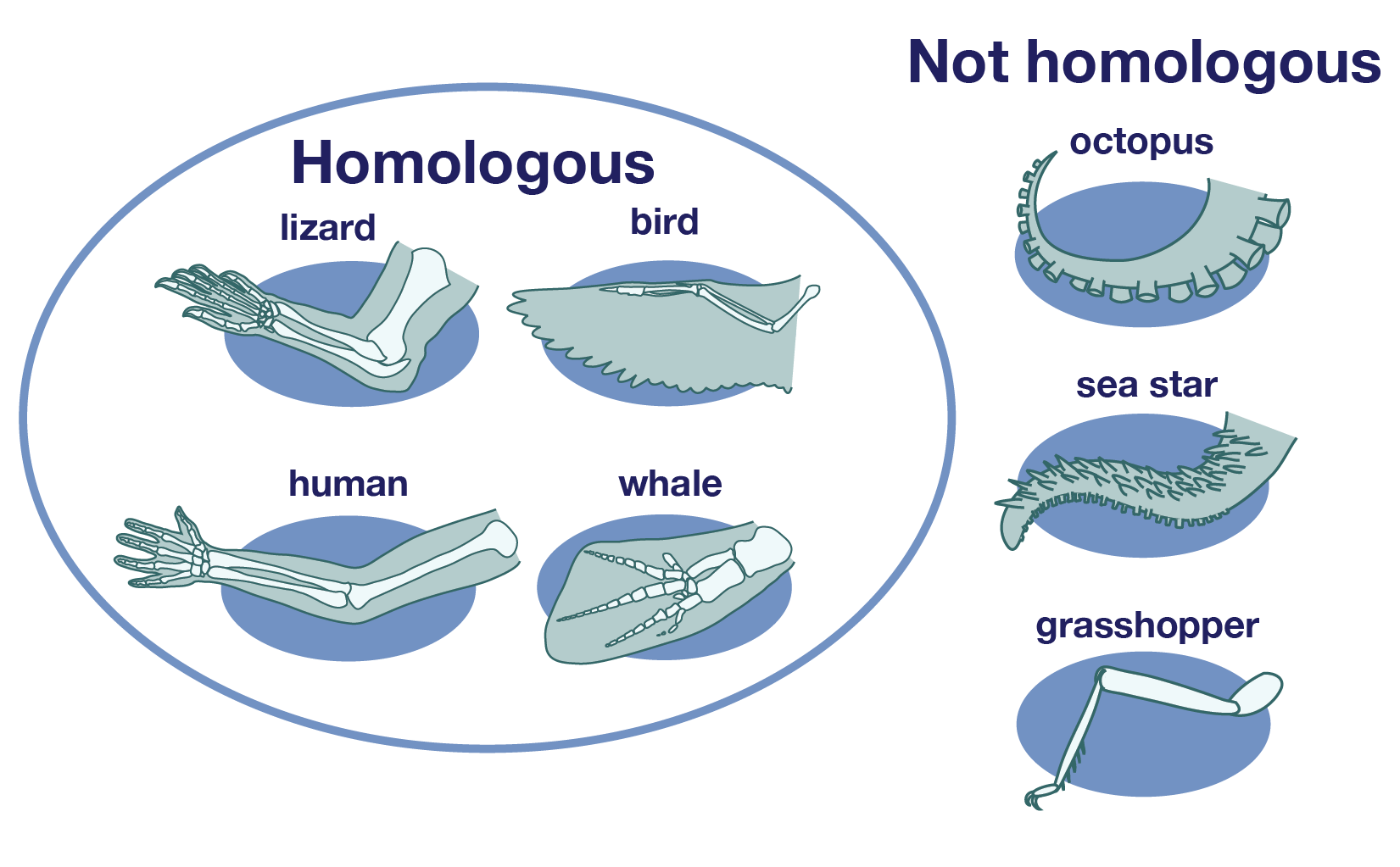
In cladistics
Taxonomic research makes use of specialized terminology. Primary homology is a researcher’s initial hypothesis that suggests a character state shared by two or more taxa is shared because of common ancestry. It is based on similar structures or anatomical connections.
In terms of conceptualization, primary homology can be further divided into “homologous” and “non-homologous” components of a single transformation series. For instance, all of the A, G, C, and T or inferred gaps at a specific nucleotide position in an aligned DNA sequence matrix are homologous in this manner.
The idea that a specific situation in two or more taxa is “the same” in terms of our character coding scheme is known as character state identity. Two adenines at the same aligned nucleotide position are therefore presumed to be homologous until shown otherwise by additional evidence.
Symplesiomorphies, or shared ancestral character states, are complementary states (often absences) that connect no natural group of creatures or synapomorphies of a larger inclusive group.
For pterygote insects, having wings is a synapomorphy; nonetheless, holometabolous insects have symplesiomorphic wings. The lack of wings in non-pterygote insects and other species is a complementing symplesiomorphy that does not belong to any particular group (for instance, the lack of wings does not show that silverfish, spiders, or annelid worms share a common ancestor).
The absence of wings (or secondary loss) is a synapomorphy for fleas, on the other hand. Many cladists believe that the concepts of homology and synapomorphy are interchangeable as a result of patterns like these.
According to certain cladists who adhere to Haas and Simpson’s pre-cladistic definition of homology, both synapomorphies, and symplesiomorphies are homologous character states.
Homology vs. Analogy
The inverse of homologous organs is analogous organs, which perform comparable functions in two taxa that did not have a common ancestor but evolved independently. Insect and bird wings, for example, evolved independently in widely distant groups and then converged functionally to support powered flight, making them comparable.
comparable to avian wings, which originate from quite diverse parts, sycamore maple seed wings are comparable but not identical. A structure can be homologous at one level but only comparable at another. Due to the fact that the organ served as a forearm (rather than a wing) in the last common ancestor of tetrapods and that it evolved differently in the three groups, pterosaur, bird, and bat wings are similar to wings but homologous to forelimbs.
As a result, the “wing” in pterosaurs includes both the forelimb and the hindlimb. The analogy is known as homoplasy in cladistics and convergent or parallel evolution in evolutionary biology.
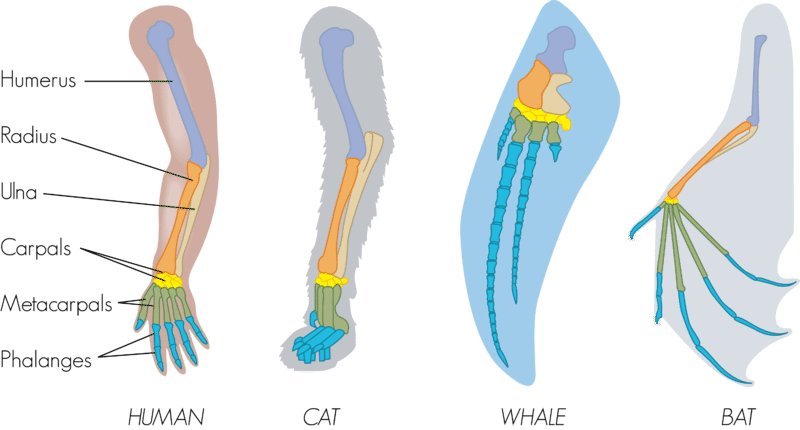
In Different Taxa
All biological classification is based on homologies, despite the fact that some of them may seem very counterintuitive. Deep similarities between vertebrates’ and arthropods’ eyes, for instance, are controlled by the pax-6 gene, which is surprising given how different the two organisms’ physical structures are and how they are initially thought to have evolved separately.
In arthropods
Different arthropod taxa’s embryonic body segments (somites) have diverged into a range of body plans with fewer segments equipped with specialized appendages from a simple body plan with numerous comparable appendages that are serially homologous. Comparing genes in evolutionary developmental biology has revealed the homologies between them.
In mammals
The malleus, incus, and stapes bones in the middle ear of mammals, including humans, are now utilized to transfer sound from the eardrum to the inner ear. In lizards and in fossils of mammals’ lizard-like ancestors, the malleus and incus grow in the embryo from structures that create jaw bones (the quadrate and the articular). Both lines of evidence indicate that these bones are homologous, meaning they share a common ancestor.
Ovaries and testicles are analogous among the various homologies in mammalian reproductive systems.
Rudimental organs, like the human tailbone, are easily understood as evidence of evolution because they were drastically reduced by natural selection from functional organs when their functions were no longer required. However, if species are thought to be fixed, it makes no sense at all. Other primates’ tails and the tailbone are similar.
In plants
- Leaves, stems, and roots
Many plants modify the growth of their basic leaves, stems, and roots to create protective or storage structures. The insect-trapping pitchers of pitcher plants, the insect-trapping jaws of Venus flytraps, and the spines of cacti are all analogous adaptations (adaptive modifications) of leaves from photosynthetic structures.
Because their formation originated from a genetic mosaic of the development of leaves and shoots, some complex leaves of flowering plants are somewhat homologous to both leaves and shoots.
- Flowering plant
As Goethe rightly observed in 1790, the four different species of floral parts—carpels, stamens, petals, and sepals—are related to and descended from leaves. The ABC model of flower formation explains how these components arise through a pattern of gene expression in the growth zones (meristems).
A small number of genes operating in diverse combinations are responsible for controlling the serial repetition of each of the four types of flower components in concentric whorls.
Sepals are produced by the A gene alone, petals by the A and B genes working together, stamens by the B and C genes working together, and carpels by the C gene acting alone. Leaves form when none of the genes are activated. The model is completed by two additional groups of genes, D for ovule formation and E for floral whorls. Evidently, the genes are as old as blooming plants themselves.
Developmental Biology
Homologous structures that developed from the same tissue during embryogenesis can be found using developmental biology. For instance, although adult snakes lack legs, early embryos include limb buds for the animal’s hind legs, which are rapidly destroyed as the embryo develops.
Fossil evidence supports the idea that snakes once had hind legs. Like modern tetrapods with legs, the Cretaceous snake Pachyrhachis problematicus possessed hind legs with all the essential bones, including hip bones, thigh bones, leg bones, and foot bones.
Sequence Homology
Similar to anatomical structures, common ancestry is used to identify sequence homology between protein or DNA sequences – also called sequence similarity. A speciation event (orthologs) or a duplication event (paralogs) might lead two DNA regions to share ancestry.
Usually, homology between proteins or DNA is determined from the similarity of their sequences. Strong evidence that two sequences are related via divergent evolution of a common ancestor can be found in the presence of significant similarity. The parts of each sequence that are homologous are identified using alignments of numerous sequences.
When a species splits into two distinct species, the copies of a single gene in the two subsequent species are said to be orthologous since they are descended from the same ancestral sequence that was split by speciation. Scientist Walter Fitch who studies molecular evolution first used the term “ortholog” in 1970.
Sequences that were homologous before a genome-wide duplication event become paralogous. If a gene in an organism is duplicated to occupy two different places in the same genome, the two copies are said to be paralogous in terms of gene duplication events. The majority of paralogous genes come from the same species.
They have the ability to alter the overall structure of genomes, which helps to explain significantly how genomes evolve. Animals’ Homeobox (Hox) genes serve as an example. These genes underwent entire genome duplications in addition to gene duplications within chromosomes. The HoxA-D clusters are the most well-studied Hox genes, which are distributed across many chromosomes in most vertebrates.
In Behaviour
Behavior that is homologous is still a contentious topic. D. W. Rajecki and Randall C. Flanery, for example, claim that patterns of behavior in dominance hierarchies are comparable among primates using data sets from humans and nonhuman primates.
The mere similarity in behavior proves common ancestral origin, just like morphological traits or DNA. An incongruent distribution of that characteristic in regard to other qualities that are assumed to reflect the genuine pattern of interactions should serve as the foundation for the claim that a behavioral characteristic is not homologous. The auxiliary principle of Willi Hennig is being used in this situation.
Homologous Structures
The relationship between DNA or structures descended from the most recent common ancestor is known as homology. The arms of primates and bats are two common examples of homologous structures in evolutionary biology.
Genetically, these two structures are related even though they do not share the same function or appearance as their most recent common ancestor. In light of this, organisms’ homologous structural features can be explained by their shared ancestry.
It’s crucial to remember that determining whether two structures are homologous depends on which ancestor is considered to be their shared ancestor. Homology in genetics is determined by contrasting DNA or protein sequences. The idea that homologous gene sequences have a common ancestor is supported by the high degree of similarity between them.
Partially homologous organisms can also evolve by combining different developmental paths or elements of them. As a result, hybrid or mosaic structures that display partial homologies might develop. For instance, because they include some characteristics of leaves and others of shoots, some compound leaves of blooming plants are partially homologous to both leaves and shoots.
NOTE IT! “Homology vs. Homoplasy”
Homology can be often mixed up with homoplasy which is a similarity as well but is obtained through independent evolution.
Take the Homology – Biology Quiz!
References
- 18.5F: Homologous Structures. (2018, July 13). Biology LibreTexts. https://bio.libretexts.org/Bookshelves/Introductory_and_General_Biology/Book%3A_General_Biology_(Boundless)/18%3A_Evolution_and_the_Origin_of_Species/18.05%3A_Evidence_of_Evolution/18.5F%3A_Homologous_Structures
- Brower, A. V. Z., & de Pinna, M. C. C. (2014). About nothing. Cladistics: The International Journal of the Willi Hennig Society, 30(3), 330–336. https://doi.org/10.1111/cla.12050
- Brower, A. V. Z., & Schawaroch, V. (1996). THREE STEPS OF HOMOLOGY ASSESSMENT. Cladistics: The International Journal of the Willi Hennig Society, 12(3), 265–272. https://doi.org/10.1111/j.1096-0031.1996.tb00014.x
- Dornelas, M. C., & Dornelas, O. (2005). From leaf to flower: Revisiting Goethe’s concepts on the ¨metamorphosis¨ of plants. Brazilian Journal of Plant Physiology, 17, 335–344. https://doi.org/10.1590/S1677-04202005000400001
- Essay: Homology | The Embryo Project Encyclopedia. (n.d.). Retrieved July 4, 2023, from https://embryo.asu.edu/pages/essay-homology
- Homology. (n.d.). Retrieved July 3, 2023, from https://encyclopedia.pub/entry/28634
- Homology | evolution | Britannica. (n.d.). Retrieved July 3, 2023, from https://www.britannica.com/science/homology-evolution
- Homology | mathematics | Britannica. (n.d.). Retrieved July 4, 2023, from https://www.britannica.com/science/homology-mathematics
- Homology and Analogy—A lesson in Biology. (2020, June 24). Sanibel Sea School. https://www.sanibelseaschool.org/experience-blog/2020/6/24/homology-and-analogy-a-lesson-in-biology
- Homology (biology). (2023). In Wikipedia. https://en.wikipedia.org/w/index.php?title=Homology_(biology)&oldid=1156350395
- Houston-Edwards, K. (2021, May 11). How Mathematicians Use Homology to Make Sense of Topology. Quanta Magazine. https://www.quantamagazine.org/how-mathematicians-use-homology-to-make-sense-of-topology-20210511/
- Koonin, E. V. (2005). Orthologs, paralogs, and evolutionary genomics. Annual Review of Genetics, 39, 309–338. https://doi.org/10.1146/annurev.genet.39.073003.114725
- Not all similarity is homology—Understanding Evolution. (2021, August 17). https://evolution.berkeley.edu/similarities-differences-homology-convergent-evo-hs/not-all-similarity-is-homology/
- Panchen, A. L. (1999). Homology—History of a concept. Novartis Foundation Symposium, 222, 5–18; discussion 18-23. https://doi.org/10.1002/9780470515655.ch2
- Sattler, R. (1984). Homology-A Continuing Challenge. Systematic Botany, 9(4), 382–394. https://doi.org/10.2307/2418787
- Schultz, N. G., Lough-Stevens, M., Abreu, E., Orr, T., & Dean, M. D. (2016). The Baculum was Gained and Lost Multiple Times during Mammalian Evolution. Integrative and Comparative Biology, 56(4), 644–656. https://doi.org/10.1093/icb/icw034
- Skaletsky, H., Kuroda-Kawaguchi, T., Minx, P. J., Cordum, H. S., Hillier, L., Brown, L. G., Repping, S., Pyntikova, T., Ali, J., Bieri, T., Chinwalla, A., Delehaunty, A., Delehaunty, K., Du, H., Fewell, G., Fulton, L., Fulton, R., Graves, T., Hou, S.-F., … Page, D. C. (2003). The male-specific region of the human Y chromosome is a mosaic of discrete sequence classes. Nature, 423(6942), 825–837. https://doi.org/10.1038/nature01722
©BiologyOnline.com. Content provided and moderated by Biology Online Editors.

